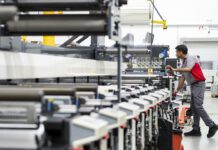
Tharsus has partnered with Scottish recycling business Ekko Glass Crush and Collect to design and manufacture the glass compacting units for use in restaurants, bars, clubs and other licensed premises.
Ekko has piloted the unit with 100 customers, including Network Rail and bar and restaurant chain Mitchells and Butlers, that use consumer glass in large quantities. Smaller than a wheelie bin, the space-saving unit can reduce glass waste volume by as much as 80%.
Tharsus chief executive Brian Palmer said: “Ekko Glass Crush and Collect has an excellent business model, which supports the growing need for economically viable methods of recycling waste. Working closely with the team at Ekko, we were asked to redesign the product to optimise throughout and satisfy international safety standards, while still meeting their commercial and technical specifications.”
Tharsus said the unit is safer because it removes the possibility of users coming into contact with glass shards. “In order to protect the operator we have redesigned the unit so that once the bottle is placed into the chute, the opening is closed off before the machine can crush the glass.”
Expected to be available by the end of the year, the machine ‘deconstructs’ all glass in one unit and can reduce over-all waste disposal costs for businesses by up to 40%.
Brian Williamson, director of Ekko, added: “After a successful pilot scheme with a number of companies, we needed a partner that could develop the design and deliver the product to a mass audience safely and after meeting with a number of different engineering and manufacturing companies, Tharsus stood out for us.
“We really liked what they had to say and we are looking forward to a successful relationship with them as they progress the development of the unit and then manufacture it on an ongoing basis.”
Home Features






